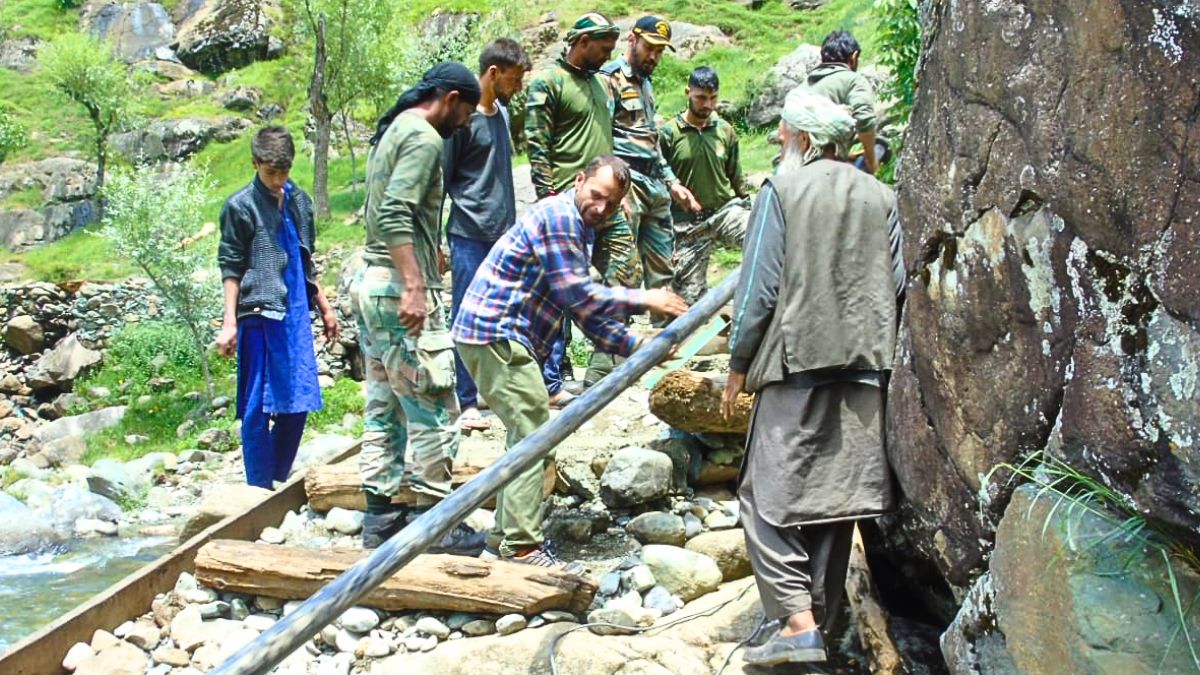Along the Line of Control (LoC) and in the high-altitude districts of Jammu, Kashmir, and Ladakh, the Indian infantry has redefined frontier defence by coupling military preparedness with community development. Working alongside the Border Roads Organisation (BRO) and Army engineers, the infantry has ensured that border regions once marked by isolation now possess connectivity and resilience.
Projects under the BRO, such as the 84-kilometre Bandipora–Gurez road and the Mohura–Baaz road in Uri, have linked remote valleys with administrative and market centres, reducing travel time and enhancing access to education, healthcare, and trade. In Ladakh, the Darbuk–Shyok–Daulat Beg Oldie (DBO) Road has enabled faster troop movement while also benefiting local communities dependent on seasonal supplies.
Infantry units have also supported the construction of temporary Bailey bridges, often built by Army engineers in areas cut off by floods or landslides. For instance, in Ramban district, the Army built the 37-foot “Friendship Bridge” over the Mahu-Mangit stream to reconnect isolated villages. These efforts show how tactical infrastructure created for operational needs simultaneously delivers lasting civic value.
Why do bunkers and border outposts matter beyond defence?
Following the Kargil conflict, the Army recognised the need to strengthen both defensive and civilian infrastructure along the LoC. Infantry units, in coordination with Army engineers, established fortified posts and surveillance towers on critical ridgelines to prevent future infiltrations.
Beyond their own defences, the Army has helped construct community bunkers in vulnerable border villages of Jammu, Rajouri, and Poonch. These reinforced shelters, often underground and capable of housing multiple families, protect residents during cross-border shelling. Thousands of such bunkers have been built over the past decade, saving lives and reducing large-scale civilian displacement.
For many border residents, these shelters represent not just safety during crises but a degree of normalcy in regions long accustomed to uncertainty. By ensuring that civilians can remain in their homes during hostilities, the infantry has directly contributed to sustaining livelihoods and community stability.
How has the Army bridged education and opportunity in Kashmir?
Under Operation Sadbhavana (“Goodwill”), the Indian Army has invested in education and youth development to counter isolation and alienation in remote areas. More than forty Army Goodwill Schools (AGS) across Jammu, Kashmir, and Ladakh provide education to over 15,000 students each year, many from regions where no schools previously existed.
Complementing formal education, Army-run initiatives such as “Kashmir Super-50” for engineering aspirants and “Super-30” for medical entrance coaching have produced hundreds of success stories. Over the last two decades, approximately 1.5 lakh youths have benefited from Army-facilitated education programmes.
The Army also operates women’s empowerment centres that teach vocational skills like tailoring, handicrafts, and computing. For communities that once had minimal access to such opportunities, these initiatives have enabled self-reliance, especially among women and young adults.
What role does military engineering play in healthcare and humanitarian aid?
In remote valleys like Tangdhar, Gurez, and Drass, Army medical units often serve as the only accessible healthcare providers. Infantry formations regularly conduct medical outreach camps, treating thousands of civilians annually and providing essential medicines, vaccinations, and maternal care.
During natural disasters, the Army’s dual role as a combat and relief force becomes evident. In the aftermath of the 2005 earthquake and the 2014 floods, infantry and engineer units conducted large-scale rescue and relief operations. Under Operation Megh Rahat in 2014, more than 30,000 soldiers helped rescue around 2.4 lakh civilians from submerged areas of Srinagar and South Kashmir, establishing temporary camps, distributing supplies, and preventing outbreaks of disease.
The Army’s logistical and engineering capabilities have consistently been repurposed to save lives and rebuild communities in peacetime emergencies.
How do infrastructure and civil support advance security in Kashmir?
The Army’s civic engagement is not distinct from its strategic mission; it directly strengthens national security. Improved roads and bridges facilitate rapid troop mobility while integrating border populations into the national mainstream. Education and vocational programmes reduce the vulnerability of youth to extremist recruitment, while humanitarian outreach reinforces trust between locals and soldiers.
When civil administration falters during natural disasters or unrest, infantry units act as first responders— clearing snowbound highways, distributing aid, or conducting flag marches to restore order. This dual competence in combat and civic assistance has made the Indian infantry indispensable to both stability and development in Kashmir.
Across the mountains of Jammu, Kashmir, and Ladakh, soldiers have built more than defences. They have built roads, schools, clinics, and trust: the foundations of resilience that sustain peace in a region once defined by conflict.
